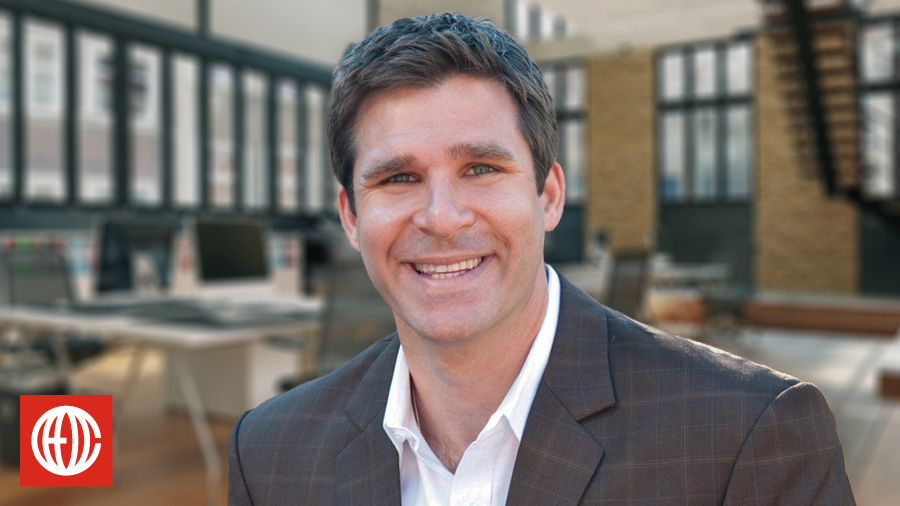
3 Keys to Crafting A Winning Gameplan for Your Business
Guest: Matt Shearer, a coach at CEO Coaching International. Matt is a highly motivated business leader and brand management executive with over 23 years of experience building teams and driving results on a global scale. Matt spent over 20 years at Under Armour and played a major role in the early stages of brand and business development, with significant focus on elevating the brand on an international level. Matt is also a member of YPO and a former professional lacrosse player.
Episode in a Tweet: In business and sports, aligning the best players with a great gameplan is the only way to win BIG.
Quick Background: Business is a team sport. And the very best teams use strong culture and clearly defined goals to put great players in a position to win consistently.
On today’s show, Matt Shearer explains how his experience as an athlete and sports brand executive influenced his leadership philosophy and team management strategies.
Keys to Winning BIG from Matt Shearer
1. Embrace a player-coach mentality.
Pop quiz: Who coached the Boston Celtics during Bill Russell’s final three seasons as an NBA player?
Answer: Bill Russell! Not only was he the NBA’s first Black head coach, Russell also won two of his 11 championships as a player-coach.
It’s hard to imagine even a basketball superstar like LeBron James playing and coaching now. But that’s exactly what the best CEOs do every single day. As a “player,” we have to execute the top-level functions that only a CEO can handle, like monitoring the company’s cash flow and building relationships with key stakeholders. And as a “coach,” we have to be able to step back, see the whole court, and help our team leaders execute the moves that are going to help the organization succeed.
“Being a leader is about setting the table as to what the vision looks like,” Matt says. “You can get alignment within the team so that cross-functionally connects to what it is that the team needs to achieve. I typically would term myself as an operator, not really being focused on any specific function, but driving the connectivity across all the functions. So, as a coach or a leader, it was about understanding where the strengths were within my team and making sure that you were putting those people in a position to play. If they can win in each of their respective roles, then ultimately the team can come out in a good spot.”
2. Balance your hard and soft skills.
Let’s switch sports — and decades, for you younger CEOs.
Broadly, I think you could divide NFL coaches into two groups. There are the Pete Carroll types who are all about broadcasting positivity and inspiring their players to be their best. And then there are the more old-school, hard-nosed Bill Belichick types.
Pete Carroll is the more popular CEO archetype right now, and with good reason. Today’s CEOs need to master the soft people skills that resonate with millennial workers, build rapport with customers, and maintain a can-do workplace culture that’s respectful and inclusive.
However, all the positive energy in the world isn’t going to matter if your happy, fulfilled workforce starts dropping the ball.
Building a great culture is essential to your business’ success, but it’s not, in and of itself, a measure of success. The challenge for CEOs is to direct their culture’s energy towards achieving specific, measurable, actionable goals. That might require the CEO to adapt his or her leadership style to a specific task, a specific challenge, or even a specific employee.
“I always really enjoyed that disciplinary coach,” Matt says, “the ones that were pretty firm in their direction. It was very clear as to what was right, what was wrong. I really liked that matter-of-fact approach to know where you should be going, what you should be doing. And I think it was something that I took into my leadership style as well. I don’t think I would consider myself really a hard-nosed disciplinarian. I’m more of a defined leader just really paving a path and having a lot of transparency as to what the goals are and what the expectations are in order to get there. If everybody understands what their roles and responsibilities are, and can be held accountable to those roles and responsibilities, I think everybody knows what the rules are amongst the team. And we all work together to get to that defined end result.”
3. Stick to your playbook.
One of the ineffable traits of any championship team is that they understand who they are. Superstars and role players alike operate in effortless synchronization, making all the right moves especially when the stakes are the highest.
Of course, a lot of effort goes into that effortlessness, both from the players who are continually improving their skills and from coaches who are continually tweaking their plans to optimize the talent that’s available to them.
“Having structure really determines function in a lot of ways,” Matt says. “That balance of people and process, making sure that you’ve got the right roster and catering your playbook to the roster. If you’ve got certain people on the team that can play multiple positions, if you will, then making sure that you’re setting them up to feed the playbook the right way and really feeding that balance of people and process as well.”
At the highest level of sports, it can be difficult to tell if the team’s successes or failures are the result of the gameplan or individual performances. Sometimes coaches get fired. Sometimes players who don’t fit the system or the culture get traded. And sometimes it takes decades for a franchise to find the balance that will get them to that championship level.
In business, there are only so many C-suite chairs and leadership roles to reshuffle. Eventually, success or failure, blame or praise, championship seasons and rebuilding plans are all going to land on the CEO’s desk. Which is why the winning gameplans we design with our entrepreneur coaching clients always start with the same question: “What do you, the CEO, want?”
“That vision as to what success looks like and where it is that you want to go, I think it’s foundational,” Matt says. “At CEO Coaching International, by asking, ‘What is it that we want to do? What is it going to take in order to get it? What might get in our way? And how can we hold ourselves accountable to making sure that we get there?’ Those are four big questions that feed that vision. So having that vision in place is foundational to making sure you’re always going in the right direction.”
Top Takeaways
1. Focus your time on player-coach tasks that only you can accomplish. Delegate the rest.
2. Put top talent in a position to succeed, whether that means adjusting the gameplan to suit the players or moving players to suit the gameplan.
3. Know what “winning” means to you and organize your team around achieving that goal.
[Tweet “In business and sports, aligning the best players with a great gameplan is the only way to win BIG.”]
About CEO Coaching International
CEO Coaching International works with CEOs and their leadership teams to achieve extraordinary results quarter after quarter, year after year. Known globally for its success in coaching growth-focused entrepreneurs to meaningful exits, the firm has coached more than 1,500+ CEOs and entrepreneurs across 100+ industries and 60 countries. Its coaches—former CEOs, presidents, and executives—have led businesses ranging from startups to over $10 billion, driving double-digit sales and profit growth, many culminating in eight, nine, or ten-figure exits.
Companies that have worked with CEO Coaching International for two years or more have achieved an average revenue CAGR of 31% (2.6X the U.S. average) and an average EBITDA CAGR of 52.3% (more than 5X the U.S. average).
Discover how coaching can transform your leadership journey at ceocoachinginternational.com.
Learn more about executive coaching | Meet our world-class coaches








